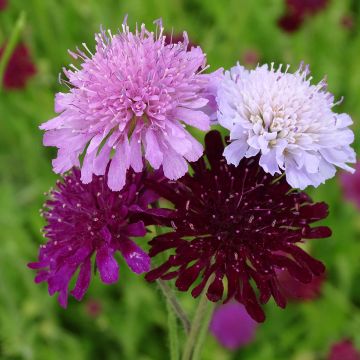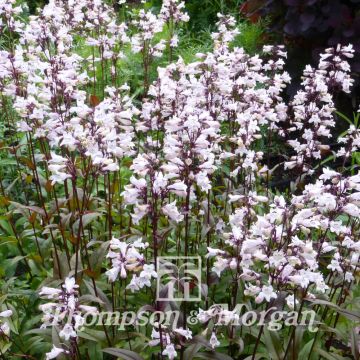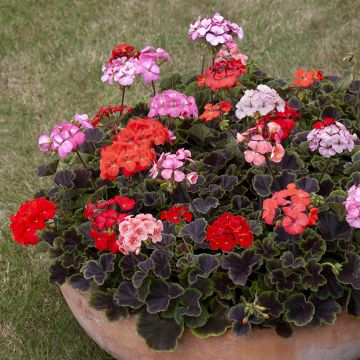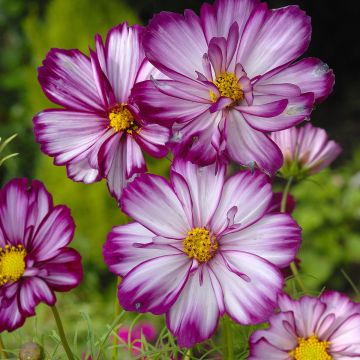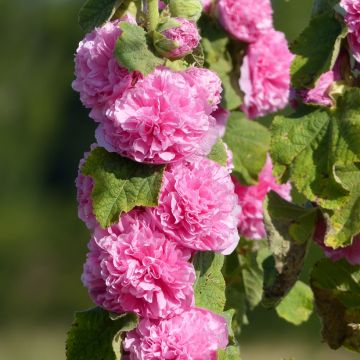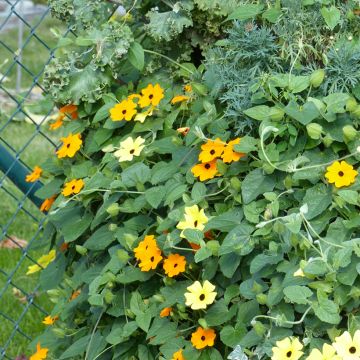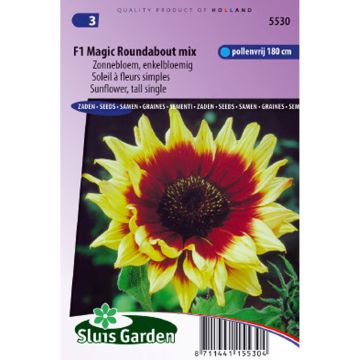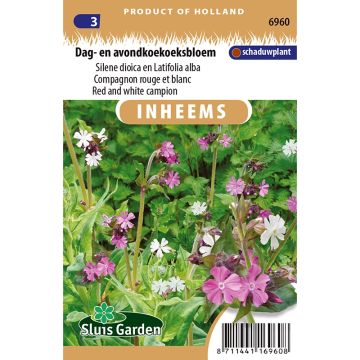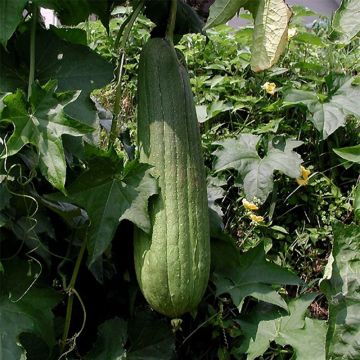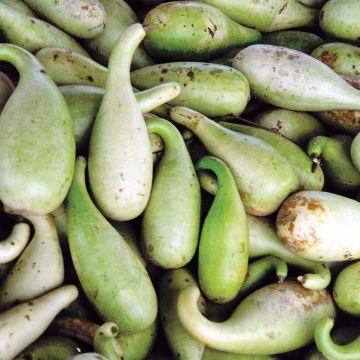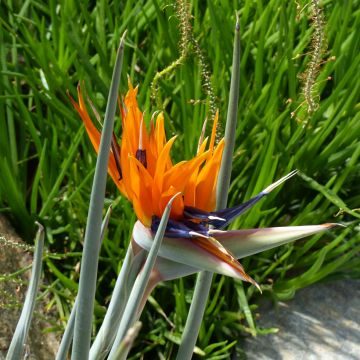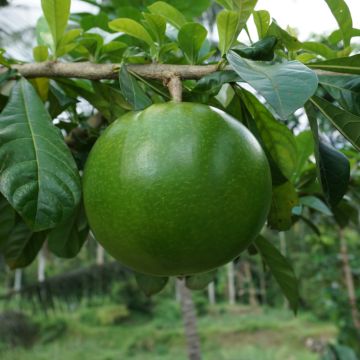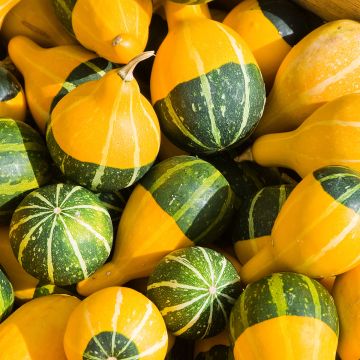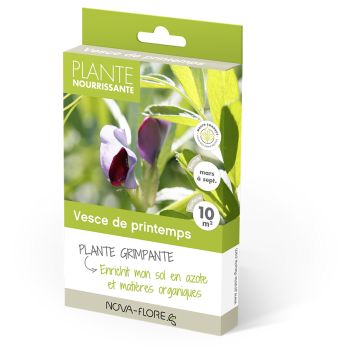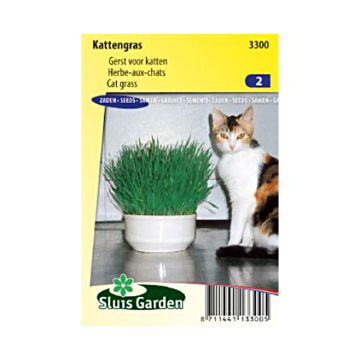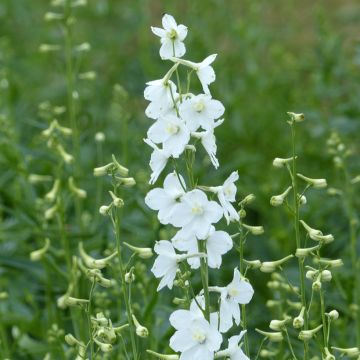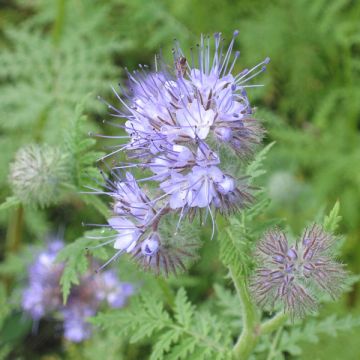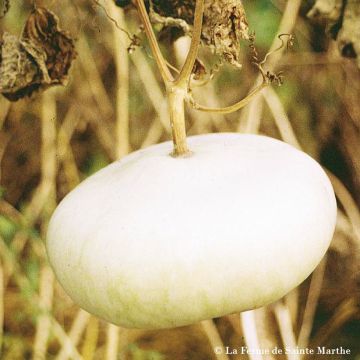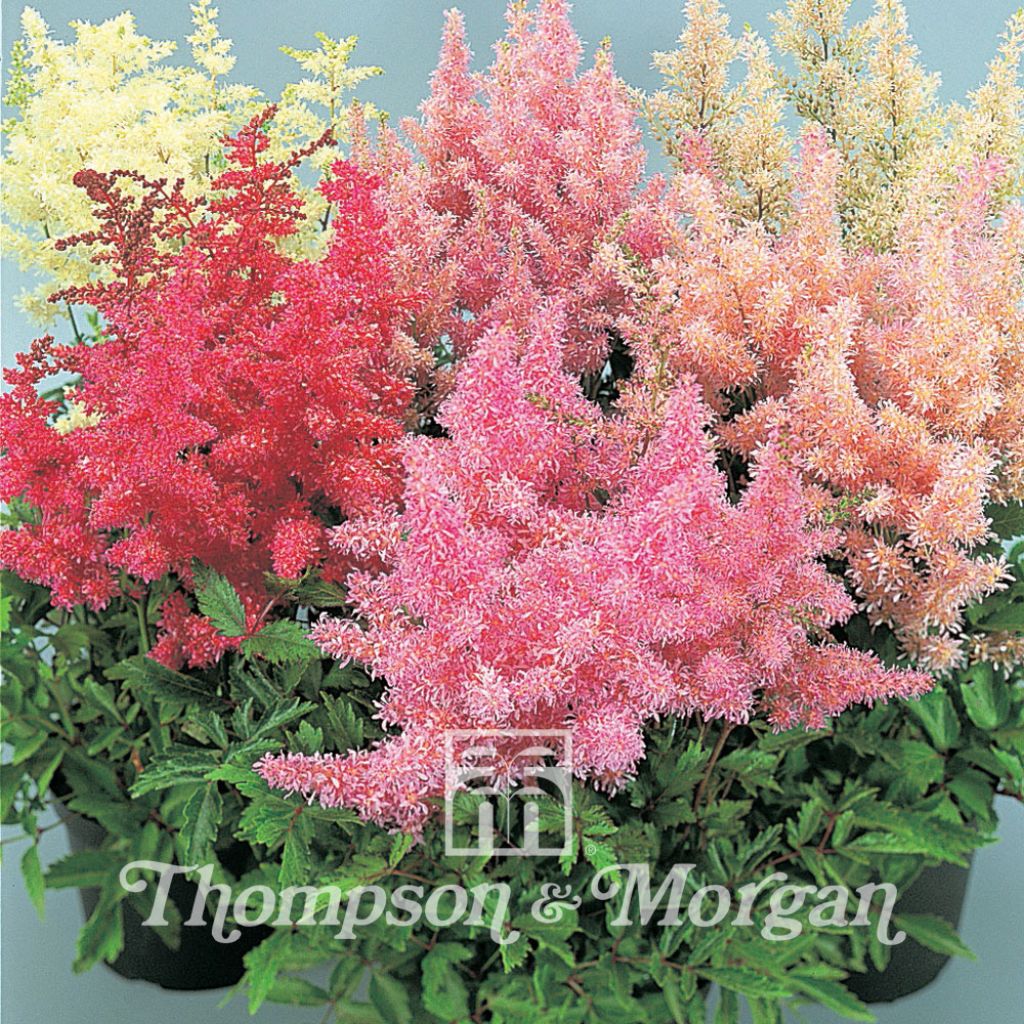

Astilbe arendsii Showstar seeds
Astilbe arendsii Showstar seeds
Astilbe x arendsii Showstar
Arendsii Astilbe, False Goat's Beard, False Spirea
This item cannot be shipped to the selected country
Dispatch by letter from €3.90
More information
Schedule delivery date,
and select date in basket
This plant carries a 6 months recovery warranty
More information
We guarantee the quality of our plants for a full growing cycle, and will replace at our expense any plant that fails to recover under normal climatic and planting conditions.
Seed-only orders are dispatched by sealed envelope. The delivery charge for seed-only orders is €3.90.
Does this plant fit my garden?
Set up your Plantfit profile →
Description
The Astilbes arendsii 'Showstar' are perennial plants in a mixture, with a compact habit and a very colorful flowering that makes them ideal for ornamental flower pots and borders. They bloom in summer, offering dense panicles of various colors such as red, pink, white, or cream depending on the plants. They thrive in moist to wet soil, also brightening up the surroundings of water features and cool areas of the garden. Their feathery inflorescences remain very attractive in dried bouquets.
The Genus Astilbe belongs to the Saxifragaceae family. The selection 'Showstar' brings together rhizomatous and stoloniferous perennial plants, which have a clump-forming and bushy habit from spring onwards. Each plant will reach a height of 40 cm when in flower, spreading to 30 to 40 cm (15.7 in). It is a long-lived perennial with deciduous, compound, and dentate leaflets, dark green in color, particularly attractive with its glossy appearance. The flowering takes place from late spring to early summer (June-July), in the form of dense and feathery panicles, 20 to 30 cm (11.8 in) long, composed of tiny flowers that fade slightly when they open. The inflorescences can be red-pink, salmon-pink, white-cream, or white depending on the plants. An adult plant can produce up to 30 panicles in one season.
The 'Showstar' Astilbe can easily be grown in containers (with careful watering), flower beds, borders, as cut flowers for drying. It also thrives in semi-shaded borders, woodlands, or hedges. Combine these plants with Hostas, Ferns, Arums, or Woodruff, for example. These plants can be forced in a greenhouse for early flowering.
Arends astilbe hybrids present less risk of allergies than other varieties.
Report an error about the product description
Flowering
Foliage
Plant habit
Botanical data
Astilbe
x arendsii
Showstar
Saxifragaceae
Arendsii Astilbe, False Goat's Beard, False Spirea
Cultivar or hybrid
Other Flower seeds A to Z
Planting and care
Astilbe seeds are generally sown indoors in early spring and transplanted outdoors after the last frost. Use a light mixture of soil and compost, and place the seeds on the surface, lightly pressing them into the substrate (the seeds should not be buried). Make sure the soil is properly drained, not waterlogged, but capable of retaining moisture, which is essential for germination that will occur in light and take 28 to 35 days. For best results, add a little fertilizer with a high nitrogen concentration. Keep the Astilbe plants indoors until they reach about 6 cm (2.4 in) in height. Transplant to the garden when there is no longer a risk of frost.
Cultivation:
Plant Astilbe ardensii 'Showstar' in moist to wet, rich, neutral to acidic soil. This hybrid cannot tolerate water shortage. The plant adapts well to clay soils if they are healthy and well amended. Note that Astilbes do not tolerate being flooded in winter. Install the astilbes in partial shade or in a sunny but not scorching exposure: in nature, these plants grow in humid woodlands. They will need to be watered daily in hot summers. Prune faded flowers after flowering to promote better foliage development. The flower stems can also be left in place if you want to decorate the garden during the winter season, simply remove them in the following spring. Avoid working the soil near these plants, as the rhizomes develop near the surface. These plants are disease-resistant and are rarely attacked by insects.
Sowing period
Intended location
-
, onOrder confirmed
Reply from on Promesse de fleurs
Flower seeds
Haven't found what you were looking for?
Hardiness is the lowest winter temperature a plant can endure without suffering serious damage or even dying. However, hardiness is affected by location (a sheltered area, such as a patio), protection (winter cover) and soil type (hardiness is improved by well-drained soil).

Photo Sharing Terms & Conditions
In order to encourage gardeners to interact and share their experiences, Promesse de fleurs offers various media enabling content to be uploaded onto its Site - in particular via the ‘Photo sharing’ module.
The User agrees to refrain from:
- Posting any content that is illegal, prejudicial, insulting, racist, inciteful to hatred, revisionist, contrary to public decency, that infringes on privacy or on the privacy rights of third parties, in particular the publicity rights of persons and goods, intellectual property rights, or the right to privacy.
- Submitting content on behalf of a third party;
- Impersonate the identity of a third party and/or publish any personal information about a third party;
In general, the User undertakes to refrain from any unethical behaviour.
All Content (in particular text, comments, files, images, photos, videos, creative works, etc.), which may be subject to property or intellectual property rights, image or other private rights, shall remain the property of the User, subject to the limited rights granted by the terms of the licence granted by Promesse de fleurs as stated below. Users are at liberty to publish or not to publish such Content on the Site, notably via the ‘Photo Sharing’ facility, and accept that this Content shall be made public and freely accessible, notably on the Internet.
Users further acknowledge, undertake to have ,and guarantee that they hold all necessary rights and permissions to publish such material on the Site, in particular with regard to the legislation in force pertaining to any privacy, property, intellectual property, image, or contractual rights, or rights of any other nature. By publishing such Content on the Site, Users acknowledge accepting full liability as publishers of the Content within the meaning of the law, and grant Promesse de fleurs, free of charge, an inclusive, worldwide licence for the said Content for the entire duration of its publication, including all reproduction, representation, up/downloading, displaying, performing, transmission, and storage rights.
Users also grant permission for their name to be linked to the Content and accept that this link may not always be made available.
By engaging in posting material, Users consent to their Content becoming automatically accessible on the Internet, in particular on other sites and/or blogs and/or web pages of the Promesse de fleurs site, including in particular social pages and the Promesse de fleurs catalogue.
Users may secure the removal of entrusted content free of charge by issuing a simple request via our contact form.
The flowering period indicated on our website applies to countries and regions located in USDA zone 8 (France, the United Kingdom, Ireland, the Netherlands, etc.)
It will vary according to where you live:
- In zones 9 to 10 (Italy, Spain, Greece, etc.), flowering will occur about 2 to 4 weeks earlier.
- In zones 6 to 7 (Germany, Poland, Slovenia, and lower mountainous regions), flowering will be delayed by 2 to 3 weeks.
- In zone 5 (Central Europe, Scandinavia), blooming will be delayed by 3 to 5 weeks.
In temperate climates, pruning of spring-flowering shrubs (forsythia, spireas, etc.) should be done just after flowering.
Pruning of summer-flowering shrubs (Indian Lilac, Perovskia, etc.) can be done in winter or spring.
In cold regions as well as with frost-sensitive plants, avoid pruning too early when severe frosts may still occur.
The planting period indicated on our website applies to countries and regions located in USDA zone 8 (France, United Kingdom, Ireland, Netherlands).
It will vary according to where you live:
- In Mediterranean zones (Marseille, Madrid, Milan, etc.), autumn and winter are the best planting periods.
- In continental zones (Strasbourg, Munich, Vienna, etc.), delay planting by 2 to 3 weeks in spring and bring it forward by 2 to 4 weeks in autumn.
- In mountainous regions (the Alps, Pyrenees, Carpathians, etc.), it is best to plant in late spring (May-June) or late summer (August-September).
The harvesting period indicated on our website applies to countries and regions in USDA zone 8 (France, England, Ireland, the Netherlands).
In colder areas (Scandinavia, Poland, Austria...) fruit and vegetable harvests are likely to be delayed by 3-4 weeks.
In warmer areas (Italy, Spain, Greece, etc.), harvesting will probably take place earlier, depending on weather conditions.
The sowing periods indicated on our website apply to countries and regions within USDA Zone 8 (France, UK, Ireland, Netherlands).
In colder areas (Scandinavia, Poland, Austria...), delay any outdoor sowing by 3-4 weeks, or sow under glass.
In warmer climes (Italy, Spain, Greece, etc.), bring outdoor sowing forward by a few weeks.

































